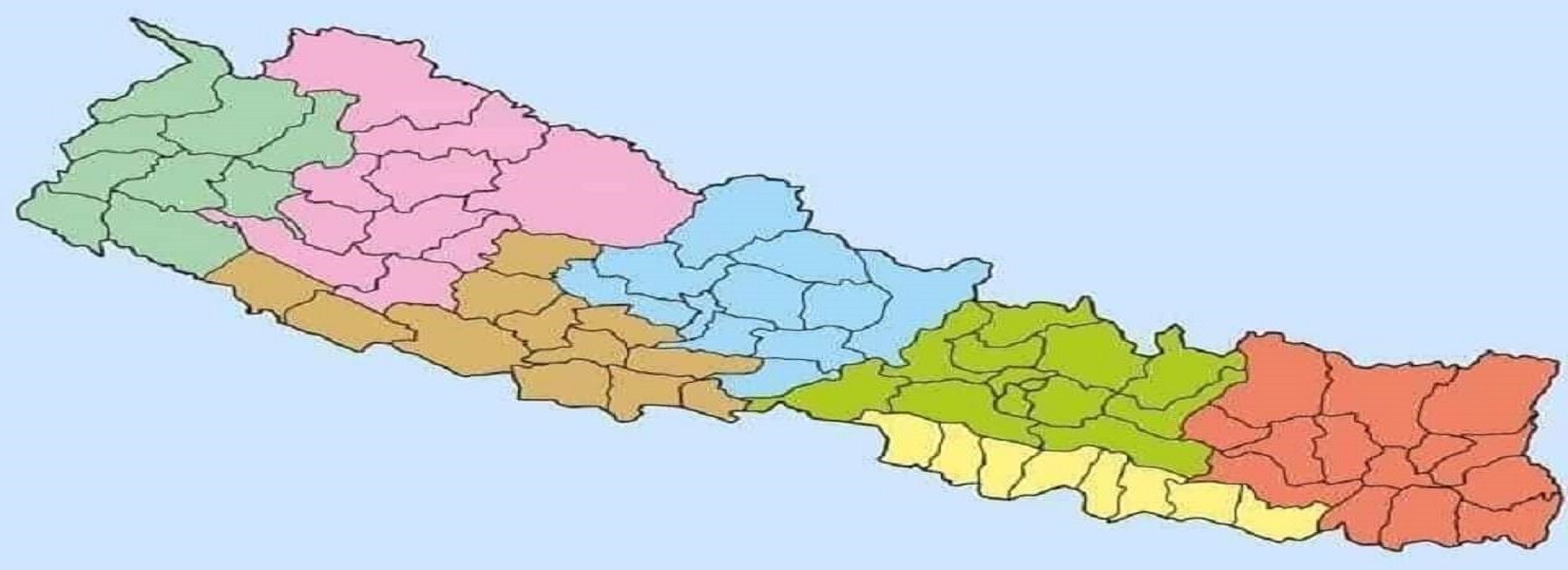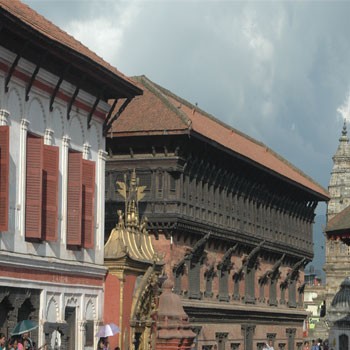Welcome to Nepal
Nepal is one of the richest countries in the world in terms of biodiversity due to its unique geographical position and latitudinal variation. The elevation of the country ranges from 60m above sea level to the highest point on earth, Mt. Everest 8,848.86m, all within a distance of 150km with climatic conditions ranging from sub-tropical to arctic. This wild variation fosters an incredible variety of ecosystems, the greatest mountain range on earth, thick tropical jungles teeming with a wealth of wildlife, thundering white water rivers, forested hills, and frozen valleys.
Within this spectacular geography is also one of the richest cultural landscapes anywhere. The country is a potpourri of ethnic groups and sub-groups who speak over 125 languages and dialects. Nepal offers an astonishing diversity of sightseeing attractions and adventure opportunities found nowhere else on Earth. You can join in the numerous annual festivals that are celebrated throughout the year in traditional style highlighting enduring customs and beliefs.
About Nepal
Nepal is a land-locked country bordering with the Tibet Autonomous Region of the People’s Republic of China in the north and surrounded by India in the east, south, and west.
Language
Location Nepali is the national language of Nepal. Educated people understand and speak English as well. There are hundreds of local dialects spoken by people from various ethnic groups.
Climate
Nepal has four major seasons, namely,(1) Winter: December-February, (2) Spring: March-May, (3) Summer: June-August, and (4) Autumn: September-November. Nepal can be visited all year round.
People and Religion
Nepalese people are mainly divided into two distinct groups, the Indo-Aryans and the Mangoloids (the Kirats). Before 2007 AD, Nepal was regarded as the only Hindu Kingdom in the world. But after that, the Government of Nepal has already announced the country to be a secular country. The Hindu Temples and Buddhist Shrines are scattered all over the cuntry. Nepal is the birthplace of Lord Buddha, the Herald of Peace, and the Light of Asia. Hindus, Buddhists, Muslims, and Christians live together in harmony. And other nature worshippers, too, exist here.
Currency & Foreign Exchange
Nepali Rupee notes come in Rs. 5, 10, 20, 50, 100, 500, and 1000 denominations. Coins come in Rs. 1, 2, and 5 denominations.
Foreign currencies must be exchanged only through banks or authorized money exchangers. The receipts of such transactions are to be obtained and retained. Visitors can exchange foreign currency at the foreign exchange counter at the airport upon arrival. Visitors other than Indian nationals have to make the payment in foreign currency (non-Indian currency) to the hotel, trekking agencies, or travel agencies, and for air tickets.
|
Location |
Southern Asia, between China and India |
|
Geographic coordinates |
28° 00' N and 84 ° 00' E |
|
Continent |
Asia |
|
Total Area |
147,516 km2 (56,956 sq mi) |
|
Land Area |
92.94% of 100% |
|
Water |
7.06% (Lakes, Rivers etc) |
|
Area – comparative |
slightly larger than Arkansas |
|
Land boundaries |
2,926 km |
|
Border countries |
China 1,236 km and India 1,690 km |
|
Coastline |
0 km (landlocked country) |
|
Lowest point |
Kanchan Kalan 70 meter |
|
Highest point |
Mount Everest 8,848.86 meter |
|
Land use |
arable land 16.07% |
|
Irrigated land |
1.80 million ha out of 2.60, million ha |
|
Population |
30.55 million (2022) |
|
Ethnic Groups |
Chhetri (16.45%) BrahminHill (11.29%) Magar (6.9%) Tharu (6.2%) Tamang (5.62%) Kami (5.04%) Muslims (4.86%) Newar (4.6%) Rai (2.2%) Damai (1.94%) Gurung (1.86%) Thakuri (1.7%) Sarki (1.55%) Teli (1.48%) Limbu (1.42%) SharmaBadhi (1.35%) Kushwaha (1.22%) Other (24.32%) according to (2021 census) |
|
Religions |
Hindu 80.6%, Buddhist 10.7%, Muslim 4.2%, Kirant 3.6%, other 0.9% (2001 census) |
|
Languages: |
Nepali 47.8%, Maithali 12.1%, Bhojpuri 7.4%, Tharu (Dagaura/Rana) 5.8%, Tamang 5.1%, Newar 3.6%, Magar 3.3%, Awadhi 2.4%, other 10%, unspecified 2.5% (2001 census)
|
|
Total Renewable Water Resources |
210 billion cubic meters per year |
|
Natural Hazards |
Earthquake, severe thunderstorms, flooding, landslides, drought, and famine depending on the timing, and duration of the summer monsoons |
|
Environment current issues |
Deforestation (overuse of wood for fuel and lack of alternatives); contaminated water (with human and animal wastes, agricultural runoff, and industrial effluents); wildlife conservation; vehicular emissions, Air Pollution |
|
Geography |
landlocked; strategic location between China and India; contains eight of the world’s 10 highest peaks, including Mount Everest and Kanchenjunga – the world’s tallest and third tallest – on the borders with China and India respectively |
|
Age Structure |
0-14 years: 27.8% 15-64 years: 64.5% 65 years and over: 7.7% The median age is 25.8 years. These figures indicate a demographic shift towards an aging population compared to the 2007 estimates.
|
|
Demography |
Population Growth Rate: 0.7% per year. Birth Rate: 17 births per 1,000 population. Death Rate: 5.6 deaths per 1,000 population. Net Migration Rate: 4.144 migrants per 1,000 population.
|
|
Life Expectancy at Birth |
Total Population: Approximately 72.12 years. Male: Approximately 71.38 years. Female: Approximately 72.9 years.
|
Flag description:
Red with a blue border around the unique shape of two overlapping right triangles, the smaller, upper triangle bears a white stylized moon and the larger, lower triangle bears a white 12-pointed sun
Major Trading Partners: China, India, European Union, United States of America US, Australia African nations, and South America
When to Go Nepal?
Climatic factors are very important in deciding when to visit Nepal. October-November, the start of the dry season, is the best time of year in many ways: the weather is balmy, the air is clean, visibility is perfect and the country is lush following the monsoon. February-April, the tail end of the dry season, is the second-best period: visibility is not so good because of dust, but the weather is warm and many of Nepal’s wonderful wildflowers are in bloom. In December and January, the climate and visibility are good but it can be chilly: trekkers need to be well prepared for snow, and for cheaper hotels in Kathmandu – nonexistent heating makes for rather gloomy evenings. The rest of the year is fairly unpleasant for traveling: May and early June are generally too hot and dusty for comfort, and the monsoon from mid-June to September obscures the mountains in clouds and turns trails and roads to mud.
Events
Nepal’s festive calendar is hectic. Dasain, celebrated nationwide in October, is the most important of all Nepalese celebrations and features the biggest animal sacrifice of the year. Running a close second is Tihar (November), but unlike Dasain, animals are honored rather than slaughtered. Other festivals celebrated nationally include the water-tinged Holi (March) and Chaitra Dasain (April), which is yet another bad day for animals. Hindu festivals number the Haribodhini Ekadashi (November) and Maha Shivaratri (March), both celebrated in Pashupatinath, the Gai Jatra (August) in Kathmandu, and the Krishna Jayanti (August/September) in Patan. Buddhist celebrations are just as thick on the ground and include Mani Rimdu (November) in Solu Khumbu, Buddha Jayanti (May) in Kathmandu, and Losar (Tibetan New Year) (February) in Swayambhunath, Jawalakhel, and highland communities.
Activities
Temple out? Sick of stupas? Try trekking instead. The best trekking season is between September and early December, although March and April are also popular.
Popular treks from Kathmandu include the Everest Base Camp, Manaslu, Ganesh Himal, Ruby Valley Trek, Helambu, and Langtang treks. From Pokhara, the most popular are the Annapurna Circuit and the Jomsom Trek. Less-traveled alternatives require more planning but include the Kanchenjunga Base Camp trek, the Dolpo region, Mustang, and Rara Lake.
Remember to minimize your impact on the environment by avoiding the use of non-biodegradable items, disposing of your garbage responsibly, staying at lodges that use kerosene instead of firewood, and not using toilet paper.
Rafting and kayaking are incredibly popular, especially on the Trisuli River near Kathmandu and the Sun Kosi in Dolalghat. More remote challenges include the Karnali (a two-day trek from Surkhet) and the Tamur (a three-day trek from Dobhan in eastern Nepal). Other activities include mountain biking in the Kathmandu Valley, Pokhara, and near the Tibetan border; and safariing in the Terai. A range of language, spiritual, medicinal, and yoga courses can be taken in Kathmandu and at various temples and monasteries.

















